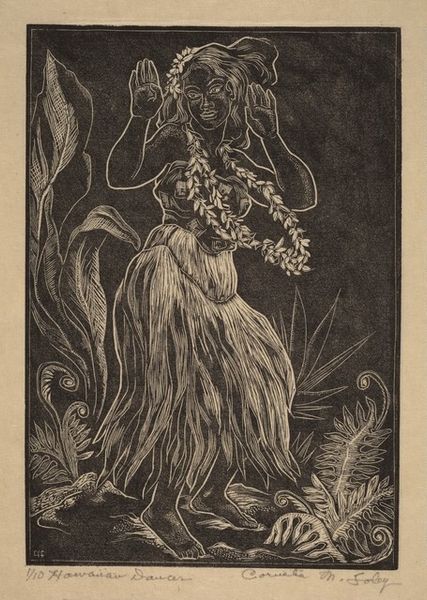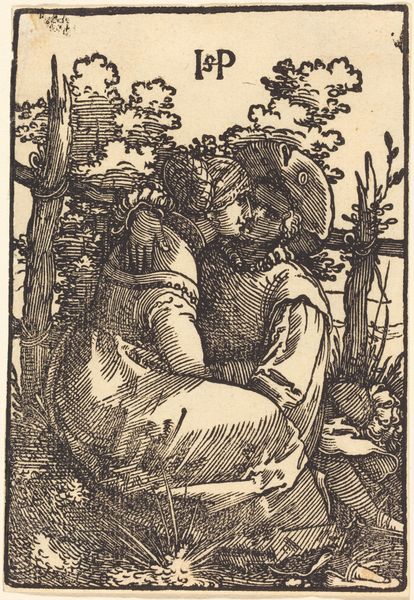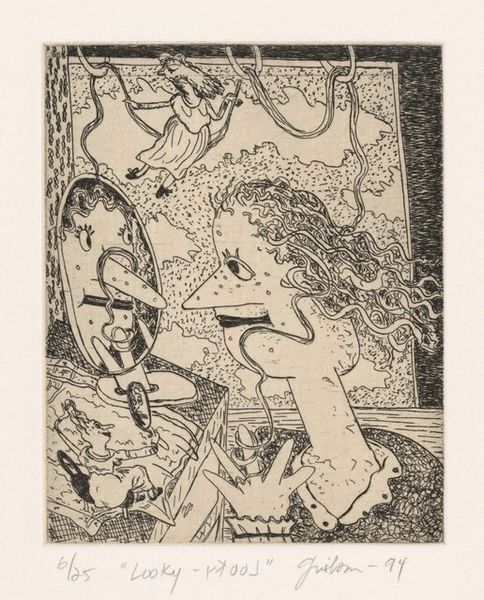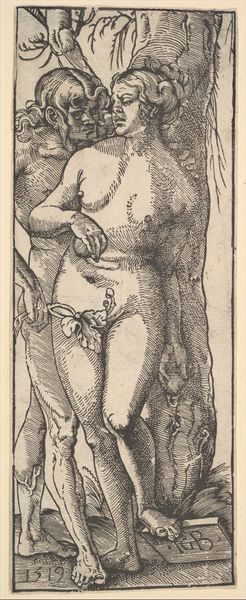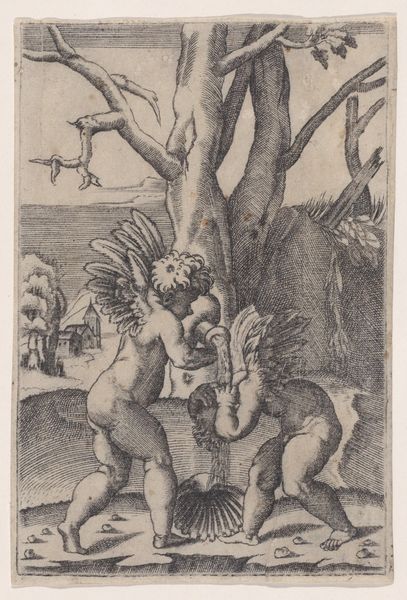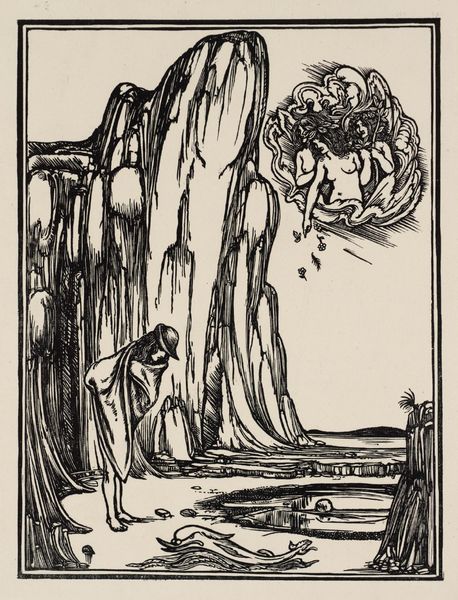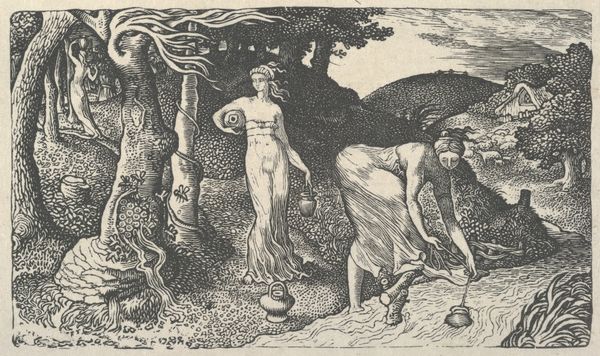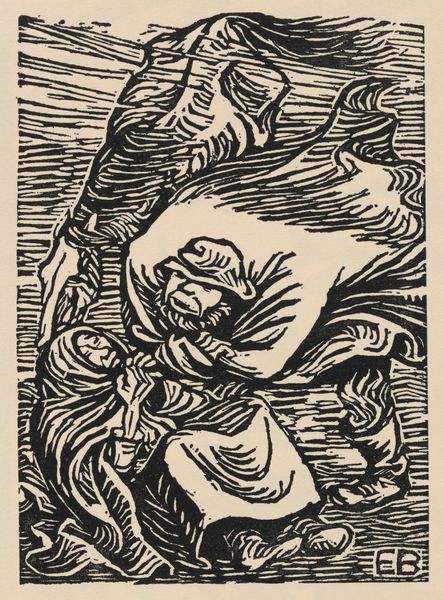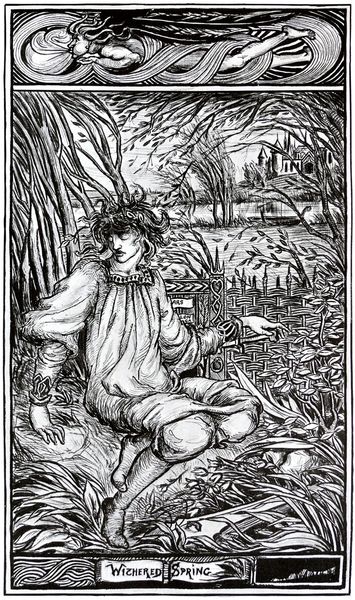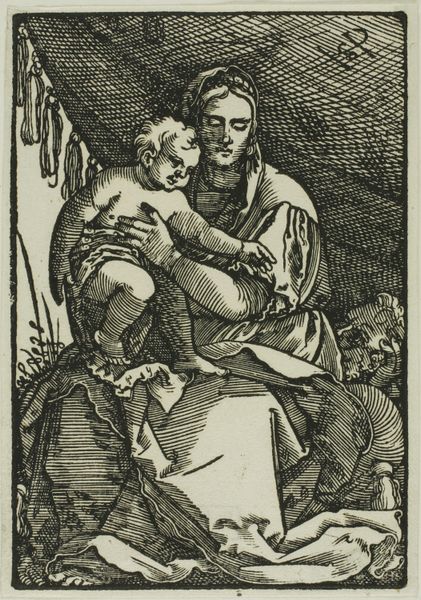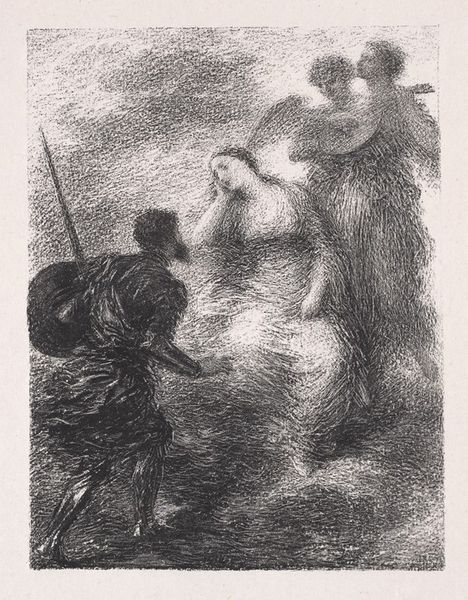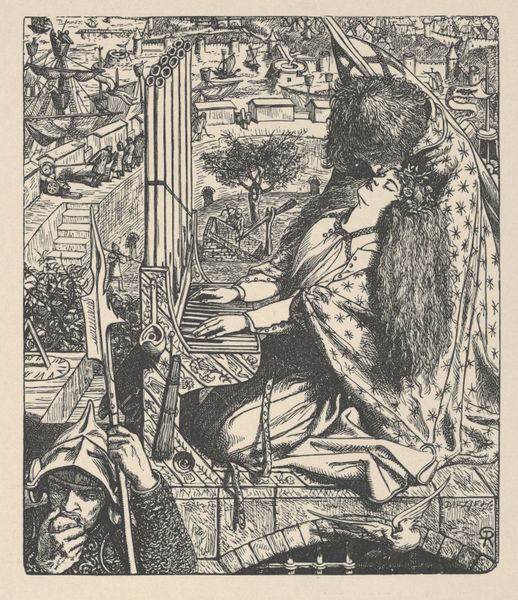
print, woodcut, engraving
# print
#
figuration
#
woodcut
#
nude
#
engraving
Copyright: National Gallery of Art: CC0 1.0
Curator: What strikes me immediately is the dense patterning and stark contrast. The entire composition feels meticulously carved. Editor: Indeed. We're looking at a woodcut engraving by Bernard Reder, likely created around 1942. The title is "Entre les Tournesols a la R." or "Between the Sunflowers at the R[estaurant]." Curator: The title suggests a specific place. But it’s also a scene of high contrast between, one might say, social artifice—look at that character with sunflowers attached to their garments and face—and an intimate nude figure. Editor: Well, thinking of the time of creation—World War II—one might view it in light of the artist's experience as a Jewish refugee. Reder fled Europe. This work, even if referencing a specific place like a restaurant, is likely also a dream space to escape the hardships and political turmoil. The sunflower might even be seen as a symbol of hope. Curator: Perhaps. But I am interested by the spatial ambiguity, almost as if we have three-dimensional figures reduced to flattened planes. Take for instance the human figure. It occupies a shallow space; is it coming in, or going out? This spatial ambiguity lends a feeling of displacement and compression to the image. Also notice the vase containing what appears to be even smaller figural forms. This nested, contained set of relationships between figure and frame further supports such analysis. Editor: Right, and the crude aesthetic might represent a sort of anti-art or rejection of prevailing artistic standards, which we would expect given the dire conditions from which the art originated. The starkness and the rough textures could be seen as reflecting the trauma and upheaval of war. It speaks to Reder's displacement. Curator: Yes, well, this print asks that we look closely at its arrangement, seeing both disruption and careful formalism operating side by side. Editor: I agree. Seeing art such as this, reflecting that experience—it makes you think about the public role of the arts, reminding us that beauty can bloom from the darkest conditions.
Comments
No comments
Be the first to comment and join the conversation on the ultimate creative platform.
